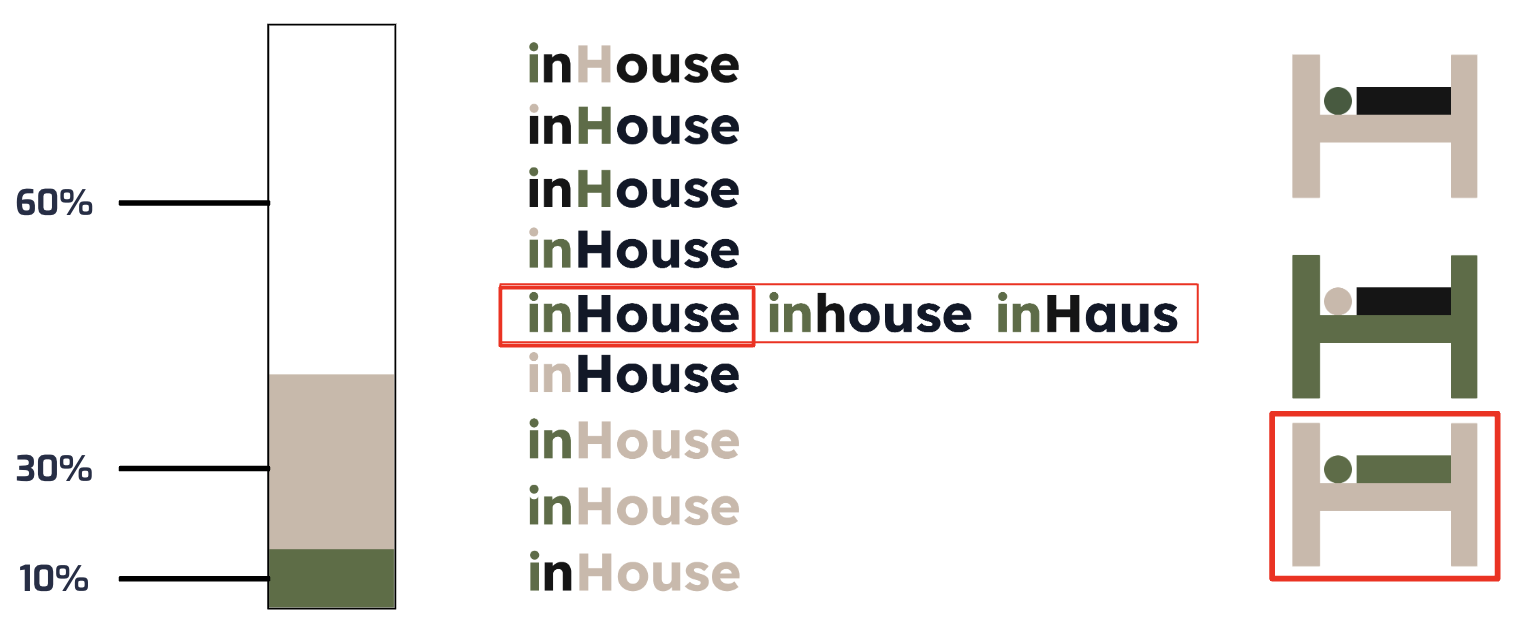
inHouse
APP DESIGN
MY CONTRIBUTIONS
TOOLS
Time Frame
User Interface Design
Figma
10 Weeks
About inHouse
inHouse, an iOS application, offers a dedicated platform for students to find suitable housing in Toronto. Students can employ distinctive filters to enhance their search, access verified listings and peruse reviews from past tenants all within one app —all in-house.
Background
In a city as vibrant and diverse as Toronto, a student’s search for off-campus housing can be both exciting and daunting. This pursuit is further complicated by the fact that individuals across Canada are witnessing an increase in rental scams, driven by a surge in rent prices and heightened competition.
Problem Space
In Toronto, where 80% of individuals aged 20-24, including university students, are renters, the growing abundance of deceptive listings on online rental platforms complicates the housing search for students.
So, what is the problem?
Students pay 25% more than the average Canadian renter. Those renting in metropolitan areas are particularly vulnerable to rental scams, given their time constraints and the fierce competition for units.
Why does this matter?
The Solution
An app designed for students to streamline their search for suitable housing and build confidence in listing accuracy through reviews from previous tenants.
The Design Process
Tip: Click on photos to enlarge them
Starting with secondary search I reviewed articles and student newsletters across various universities in Toronto to gather quantitative and qualitative data. Afterwards, I conducted user interviews with three participants to form an understanding of their pain points, motivations, and behaviors.
RESEARCH
After completing user interviews, I organized and synthesized the data using an affinity map and chose to explore the theme of listing and landlord reliability because it exhibited the highest number of pain points in my interviews. To further refine my scope, I focused specifically on the issue of listing reliability, guided by the insight into how participants face an unreliable rental process due to frequent listings with insufficient or incomplete information.
INTERVIEWS
Next, I authored a How Might We question to guide the development of my proto-persona
How might we help university students living in Toronto verify the accuracy of rental listings so that they can find suitable housing?
Through the development of a persona and experience map, I was able to visualize Sam’s actions, thoughts, and feelings experienced at each stage of his journey. This visualization helps us identify potential areas for introducing a solution.
Notably, Sam encounters the most challenges in the narrow and decide stages, expressing uncertainty due to a lack of information. This observation led to my focused efforts in developing a digital solution tailored to address these specific touchpoints.
PERSONA & EXPERIENCE MAP
The flow focused on being able to filter results to only show verified listings and the ability to view listing reviews as well. This flow allows students to eliminate irrelevant housing options based on criteria, verification, and livability, using a built-in verification process and community review system.
TASK FLOW
With a finalized primary task flow and Sam’s pain points and motivations in mind, I began sketching various iterations to visualize the appearance of different screens and evaluated the pros and cons of each design.
SKETCHES
Next, I chose one design from each screen and refined the sketches to enhance their strengths, mitigate their weaknesses, and ensure they prioritized functionalities that best suited Sam’s needs.
FINAL SKETCHES
Now it was time to translate the final set of chosen sketches into an initial mid-fidelity prototype for usability testing.
MID-FIDELITY WIREFRAMES
I performed two rounds of usability testing, each consisting of five individual user test sessions. The purpose of these testing sessions were to observe real users interacting with inHouse and gather immediate insight on any usability issues. To uphold consistency across all user testing sessions, I created a scenario summary and test script consisting of open-ended questions.
To develop a primary brand colour, I extracted colours from my mood board. I chose the beige colour and then compared this beige against the remaining colours to find a secondary colour.
BRAND DEVELOPMENT
Colours Extracted From Mood Board
Secondary Colour Exploration
HIGH-FIDELITY WIREFRAMES
Using the atomic design system, I organized all of the elements that bring inHouse to life. Developing a design system also upholds consistency in future app developments across various roles.
DESIGN SYSTEMS
Key Learnings
Good questions are important to ensure you get meaningful results from user testing.
Keeping a design system and starting it early is key to a productive and efficient design process.
Next Steps
Refine the animations and functionalities in my high-fidelity prototype.
To make my app more robust, I want to add user flows such as identity verification upon sign-up and viewing a user’s profile to see all listings under an account.







